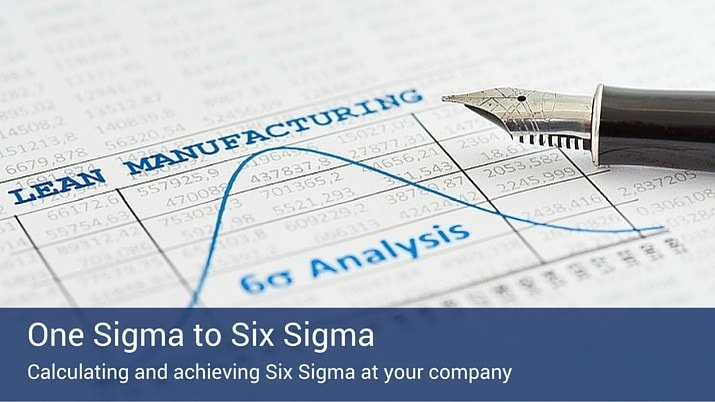One Sigma to Six Sigma

Last Updated October 19, 2023
Six Sigma is a methodology designed to minimize defects in your company’s output. The goal is to achieve six standard deviations (or a 6.0 process sigma) between the mean and the nearest specification in regards to your organization’s processes, whether they be based on manufacturing, transactions, products or services.
Many companies who practice Six Sigma regularly calculate their process sigma, so they can measure their efforts and look for chances to further improve. Process sigma is made up of two factors: Opportunities and Defects.
Opportunities
An opportunity can be defined as the total number of chances, per unit or transaction, for a product or service to experience a defect. The more complex the product or service, the more opportunities it will have for defects.
Defects
In order to properly gauge your company’s sigma level, you need to take your consumers’ perspectives: what would be their definition of a defect? What about your business output would cause concern to one of your customers?
For example, if you are in the restaurant business, this might be the equivalent of delivering the wrong meal to a customer. If you’re building appliances, if might be an appliance’s failure to operate. Examples can vary from industry to industry and product to product.
Typically, the best way to discover defects is to interact with customers. Once you’re clear on what a defect actually is, you can calculate your process yield.
Process Yield
The math is simple. Subtract your company’s total number of defects from the number of opportunities. Then divide by the number of opportunities, and multiply the result by 100.
For instance, if you had 1 million opportunities and 6,000 defects, you’d subtract 6,000 from 1,000,000. The resulting 994,000 would then be divided by 1,000,000. The dividend, 0.994, would then be multiplied by 100. That equation gives a process yield of 99.4, or 99.4%.
((Opportunities – Defects) / Opportunities) * 100 = Process Yield
The final step of the process involves a sigma conversion table. The 99.4% process yield that’s detailed above equates to a Four Sigma.
Achieving Six Sigma
In comparison, using the same model, a One Sigma level process produces 690,000 defects per million opportunities.
A Three Sigma quality level of performance produces roughly 66,800 defects per million opportunities.
The goal companies should reach for is Six Sigma, meaning 3.4 defects for every one million opportunities. This is achieved by eliminating waste to produce stable and predictable results, using the five-step model DMAIC.
Calculating your process sigma is a great way to measure your organization’s capability and decide whether you are happy with your current performance. If you feel like you’re maximizing potential and there’s not a lot of room to improve, then the process sigma isn’t likely to tell you any differently.
It can, however, be a great strategy for looking at your processes through an analytical lens and exploring ways to get better.





